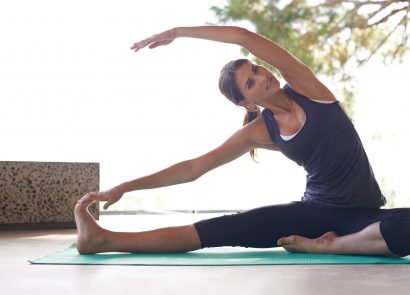The secret to running faster, stronger and further?Turns out pounding the tarmac and trails isn’t the only way to reach your running goals. With up to 50 percent of runners suffering an injury each year, striders are beginning to realise the benefits of cross training – that is, doing a non-running activity or two. Here’s a snapshot of the rewards – cross training helps build strength and flexibility in non-running muscles, which can correct muscular imbalances, prevent injuries, boost fitness and aid rehabilitation. Plus, a change of sport can go a long way to breaking up the monotony of endless running.
But don’t take our word for it – take a look at the scientific evidence. Researchers from California State University, for instance, put the effects of cross training on running performance to the test. The scientists split 11 runners into a run-only group and a cross-training group for five weeks. The run-only group did four 45- minutes runs a week; the cross-training group did two 45-minute runs and two 45-minute rides per week. At the end of the study, the run-only runners improved their 5k time by 7.3 percent but, amazingly, the cross-training group boosted their 5k time by 7.5 percent!
-
DEEP WATER RUNNING Deep water running – or running in the pool – is hands-down one of the best activities for striders. It’s a non-impact activity that will give your joints a welcome break from pounding the pavements, while simultaneously working the same muscle groups as land running. “Pool running will help strengthen your lower and upper body,” explains Scott Laidler, top PT at scottlaidler.com.
“During heavy training weeks, swap a land run for a pool run to reduce the risk of injury. Pool running is also a good training choice for runners who have picked up an injury that prevents them from running, as it means they can perform the running action in a weightless water environment.” Hurrah!
Give it a go!
Want to maintain running speed? The trick is to replicate your regular running sessions in the water – do interval workouts and long-distance sessions, for instance. Try to spend the same amount of time running in the pool as you would pacing the roads. -
WEIGHT-LIFTING SESSIONS Pumping iron may seem counter-productive, and certainly many runners worry about building bulk and slowing down if they lift weights, but the right resistance moves can be very beneficial. Case in point – one study by Norwegian researchers compared a group of runners following a run-only schedule with another group that ran and did weighted squats three times a week.
Results reveal that the squat/run group reaped the best results, boosting running efficiency and the time it took them to run to exhaustion. “Weight training is extremely useful to a long distance runner as it will help strengthen both upper and lower body muscles, which are highly taxed during long runs,” adds Laidler. “This helps prevent injury and provides the strength to maintain good posture over distance.”
Give it a go!
Try this strength workout from No1 Fitness (no1fitness.co.uk) personal trainer Felix Ma:
1. LATERAL BAND WALK
Start in a half-squat position with a resistance band wrapped above the knees. Take 10 steps to the right and then 10 steps to the left. Make sure the movement is controlled.
2. SPLIT SQUAT
Stand in front of a chair and extend your right leg behind, so your toes are resting on the seat. Lower into a lunge; return to the start. Perform on both sides, starting with the weaker leg.
3. PROWLER SPRINTS
Place a loaded prowler sled on a clear run. Grab the hands with your arms extended. Drive through the ground with short, alternating steps to push the sled forward 10 metres.
4. SINGLE LEG BOUNDS
Start standing. Raise the right leg into the air to jump up and forward as far as possible. Land on the right foot and immediately repeat on the left side. Continue alternating. -
LONGDISTANCE WALKS Surprising fact – although walking seems a little hohum, it’s a great way to boost your running ability. Why? Because it ups your stamina while simultaneously strengthening your feet, knees and hips, as well as giving your joints a break from the pounding of running. “Walking is rather low-intensity compared to running but, if you need to quickly condition your body for a long-distance event, it’s a great option,” raves Laidler. “Walking puts very little strain on the body, so it doesn’t take long for the body to recover from a hike. Yet, walking recruits most of the same muscles as running. Long walks can help condition your legs for long distances, even when you haven’t recovered from your last long run!” Win-win.
Give it a go!
Walk on a non-running day to increase your stamina and boost blood flow around the body, which aids recovery. Aim to walk continuously for up to an hour. If that’s a little tiresome, wear an activity tracker and aim to increase your daily steps by walking to the shops, work and after dinner.


















